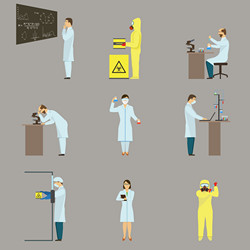Molecular markers of radiation-induced cancer improve risk estimates
Due to lack of statistical power and competing risk factors not under control, conventional epidemiology has limitations in studying cancer risks after exposure to ionizing radiation with low dose. The EU-funded EPIRADBIO (Combining epidemiology and radiobiology to assess cancer risks in the breast, lung, thyroid and digestive tract after exposures to ionizing radiation with total doses in the order of 100 mSv or below) project integrated molecular biology in the modelling of radiation-induced disease processes and improved cancer risk estimates based on epidemiological data. A biobank of blood samples from over 370 donors belonging to the French Hemangioma Cohort was established as an import tool for future research on low-dose radiation effects in humans. DNA measurements of freshly frozen breast cancer samples from 46 female Mayak workers and non-exposed controls revealed the tumor necrosis factor (TNF) and miRNA 3184 as candidates for markers of radiation-induced breast cancer. Studies on the DNA, RNA and protein level of thyroid cancer samples from two independent cohorts confirmed CLIP2 as a biomarker for radiation-induced thyroid cancer diagnosed at age below 20 years. Numerous biological endpoints have been measured for both low and high dose exposures of primary human breast stem cells from cosmetic or elective surgery. Co-culturing human lung epithelial cells with fibroblasts enhances epithelial to mesenchymal transition (EMT) suggesting the importance of the microenvironment for pre-carcinogenic changes in normal epithelium. Extension of in vitro data on intercellular induction of apoptosis in oncogenic transformed cells to in vivo conditions indicates that irradiation may enhance or reduce induced apoptosis depending on system parameters. Radiation treatment during infancy for hemangioma was found to cause among Swedish females with familial predisposition a more than twice higher breast cancer risk than among females. A new model of carcinogenesis in the thyroid incorporating two different pathways of thyroid cancer depending on CLIP2 expression and based on post-Chernobyl data decreased considerably the uncertainty of radiation risk estimation compared to assessments presently used in radiation protection. Colon cancer with chromosomal instability was found to be much more influenced by life style than colon cancer with micro satellite instability. Finally, EPIRADBIO delivered quantitative cancer risk estimates for different exposure scenarios relevant for radiation protection.
Keywords
Low-dose ionising radiation, cancer risk, epidemiology, radiobiology, biomarker, radiation-induced disease processes







